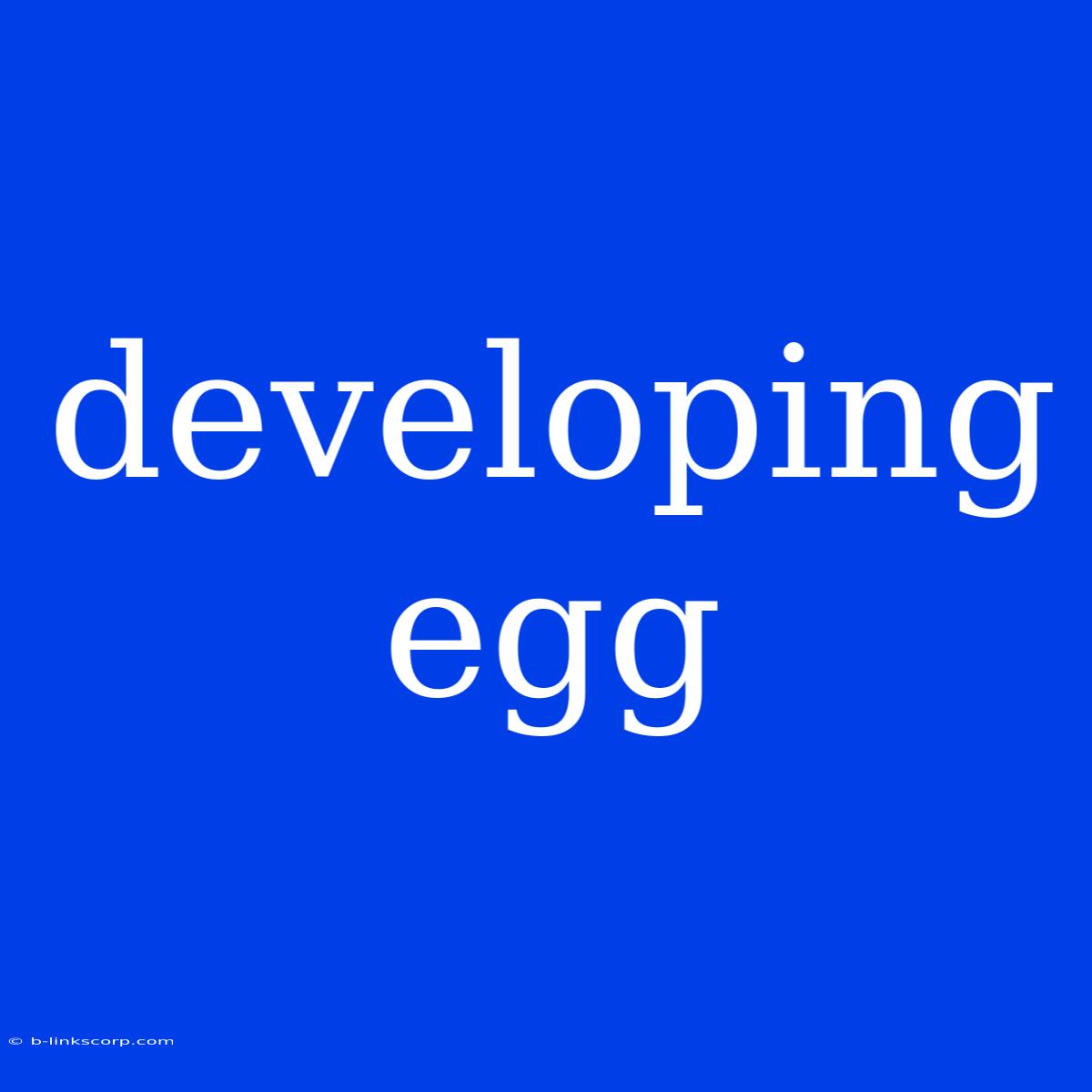The Amazing Journey of a Developing Egg: From Fertilization to Hatching
The development of an egg is a remarkable process, a testament to the power of nature and the intricate dance of life. From the moment a sperm cell fertilizes an egg, a cascade of events unfolds, transforming a single cell into a complex organism.
The Beginning: Fertilization and Cleavage
Fertilization is the moment of conception, when a sperm cell unites with an egg cell. This fusion triggers a chain reaction, activating the egg's development. The fertilized egg, now called a zygote, begins to divide rapidly through a process called cleavage.
Cleavage results in the formation of numerous smaller cells called blastomeres. These cells are packed tightly together, forming a solid ball known as a morula.
The Blastocyst: Implantation and Differentiation
The morula continues to divide and reorganize, forming a hollow ball called a blastocyst. This structure contains two main components:
- Inner Cell Mass (ICM): The ICM is a cluster of cells within the blastocyst that will eventually give rise to the embryo itself.
- Trophoblast: This outer layer of cells surrounds the ICM and will contribute to the placenta, the organ that provides nutrients and oxygen to the developing embryo.
The blastocyst implants itself into the uterine wall, establishing a connection with the mother's bloodstream. This is a crucial step for the embryo's survival, as it allows for the transfer of essential resources.
Embryonic Development: Organ Formation and Growth
The embryonic stage is a period of rapid growth and differentiation. The ICM develops into three primary germ layers:
- Ectoderm: This layer gives rise to the skin, nervous system, and sensory organs.
- Mesoderm: The mesoderm forms the muscles, bones, circulatory system, and excretory system.
- Endoderm: This layer develops into the lining of the digestive system, respiratory system, and other internal organs.
As the embryo grows, organs begin to form and develop. This process is highly coordinated and regulated by a complex network of genes and signaling pathways.
Fetal Development: Maturation and Growth
Once the major organ systems are formed, the embryo transitions into the fetal stage. This is a period of continued growth and maturation. The fetus gains weight, develops its skeletal system, and prepares for life outside the womb.
Hatching and Birth
In birds and reptiles, the development of the egg takes place outside the mother's body. The chick or hatchling emerges from the egg after a period of incubation, depending on the species.
In mammals, the embryo develops within the mother's uterus, receiving nourishment through the placenta. After a period of gestation, the fetus is born.
Conclusion
The development of an egg is a remarkable journey of transformation, encompassing a multitude of complex events. From fertilization to hatching, the process is a testament to the beauty and complexity of life. Understanding this process not only provides insights into the fundamental principles of biology but also highlights the importance of proper care and nutrition during pregnancy and development.

